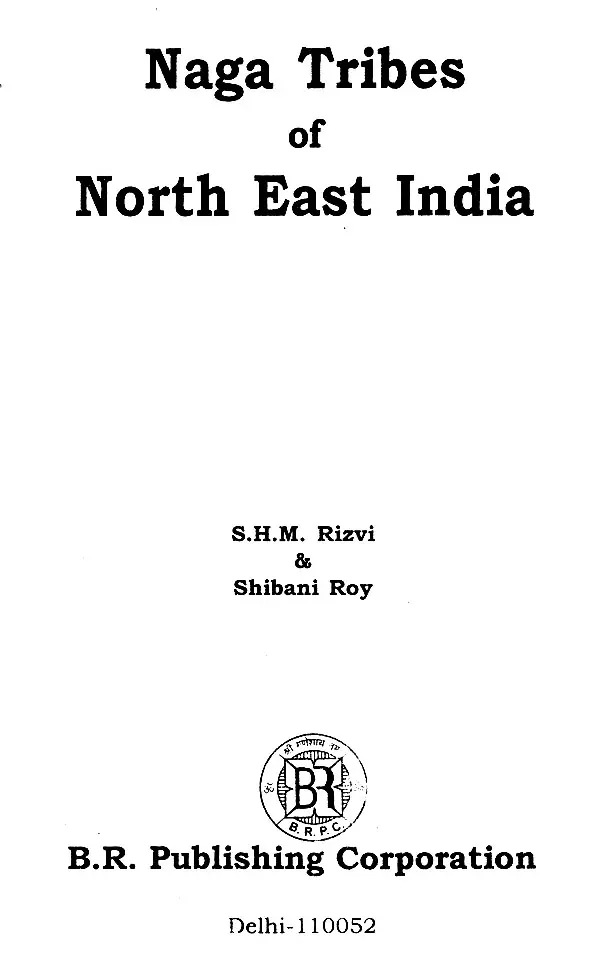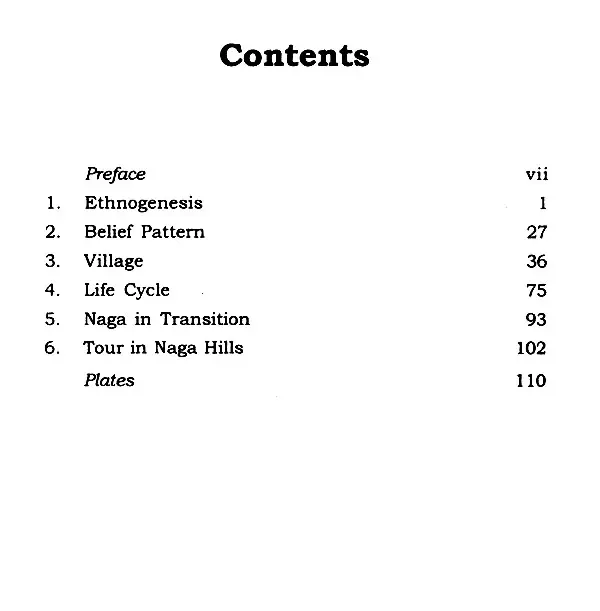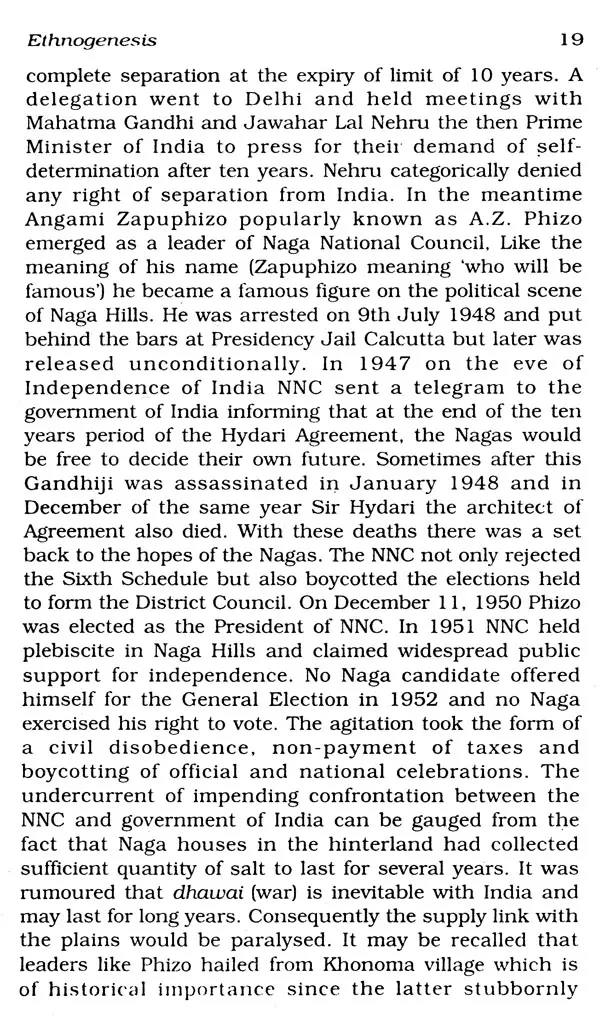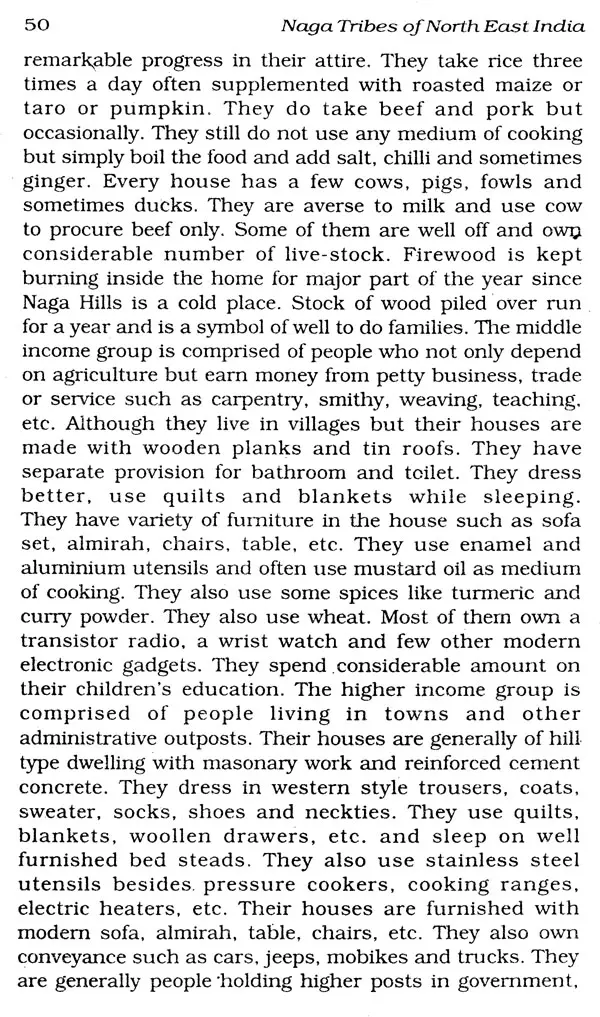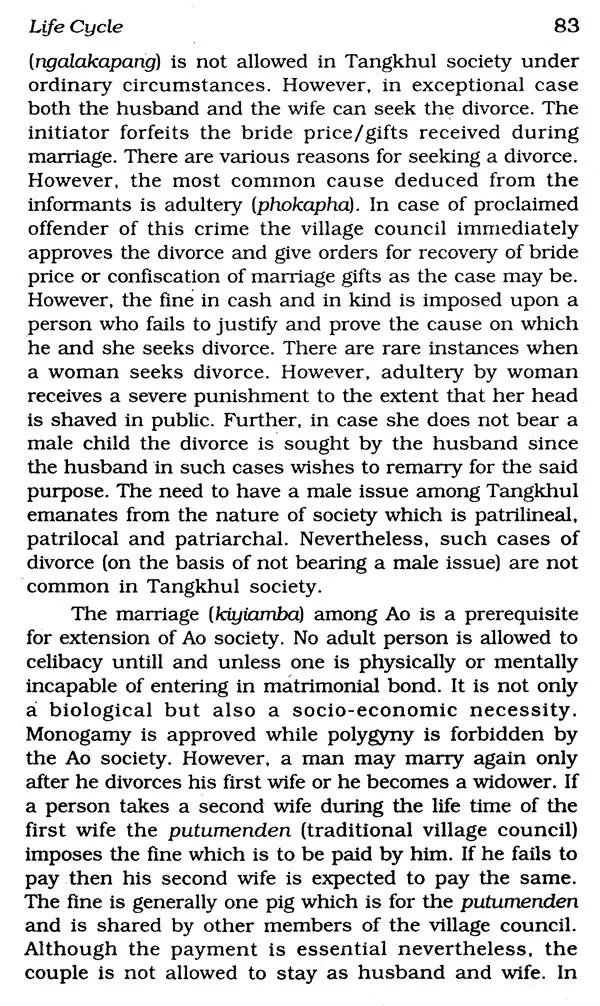
Naga Tribes of North East India
Book Specification
| Item Code: | UAQ169 |
| Author: | S.H.M. Rizvi & Shibani Roy |
| Publisher: | B.R. Publishing Corporation |
| Language: | English |
| Edition: | 2012 |
| ISBN: | 9788150500354 |
| Pages: | 123 (Throughout B/w Illustrations) |
| Cover: | HARDCOVER |
| Other Details | 9.00 X 6.00 inch |
| Weight | 280 gm |
Book Description
"When you go home, tell them of us, that for their tomorrow, we gave our today," reads an epitaph in the Second World War Cemetery of Kohima- the capital of Nagaland. This state is the home of the brave and darling, yet simple and innocent, Naga tribes. Lapped in the eastern frontiers of the Himalayan mountain range Nagaland is marked by an unhurried pace of life, calm and serene environs and fresh, unpolluted air, which make a welcome change for a jaded city dweller. The Nagas belong to the Indo-Monogoloid family. The major Naga tribes are the Angami, Ao, Chakesang, Chang, Khemiangan, Konyak, Lotha, Phom, Pochury, Rengma, Sangtam, Sema, Yimchunger Zeliang. Each tribe has their own languages and cultural features. They are living in the present Nagaland, Hills of Manipur (Snapati, Tamenglong, Ukhrul, Chandel district), in the North Cachar, Mikir Hills Lakhimpur, Nowgaon, Sibsagar in Assam, in the North-East of Arunachal Pradesh, in the Somra-tract and its contiguous parts of Mayanmar.
As the Naga seek to renewed their sense of self-respect in a modern world, they are embracing the past to shape the future. Nagas attempt to deal with the concerns of a modern society, a consensus has grown that the solutions to many of the present problems lies in the abandoned traditions of the past. The present study emphasizes this by giving ethnographic details.
Dr. S.H.M. Rizvi, Ph. D (Delhi University) has been engaged in bio involvement in various research projects enabled him to conduct field work in the remotest areas of Western and North-Eastern India and study various tribes and communities living in the arid zone of Barmer district of Rajasthan to human groups living in hilly inhospitable forests of Manipur bordering Burma.
Dr. Shibani Roy, Ph. D. (Delhi University) is actively engaged in field base empirical research among the Muslims of Northern and Western India besides doing field work oriented research on tribes of Western and North-eastern India.
The natural resources of a country and its cultural heritage belongs to its people. Each individual has a right over it and they are also vested with the responsibility to understand appreciate and practice it for its conservation. Cultural heritage conceptually is a term which encompasses the entire cultural environment with landscapes, historical places, art forms, celebrations, biodiversity, collections, the traditional and continuing cultural practices, knowledge, wisdom and living experiences. All these are achieved over a long process of historic development forming the essene of a highly diversified national, regional, indigenous and local specificities which becomes an integral part of contemporary living. Thus, it is a collection of dynamic referral points and positive instrument for growth and change. Heritage along with collective memory are area based or community based which are irreplaceable and form the main bulwark for present and future development. India is a country which portrays variety of cultural norms and practices reflecting its diversity and character.
Tourists in thousands through all the six seasons flock here not for the airports, hotels. recreational facilities. gambling havens, geographic locations, palaces, temples and the people. Each of the above mentioned aspects of tourism in India is much below the mark of world standard. Other countries have better infrastructural and logistic support for comfort of the tourists. Popularity of India in world tourism is because of its vibrant culture and still alive cultural heritage which are manifested in the mundane affairs of the people in their day to day living style: whether they are Hindu, non-Hindu or tribal. All these collectively is an aspect of life to be experienced and not only seen.
Book's Contents and Sample Pages
